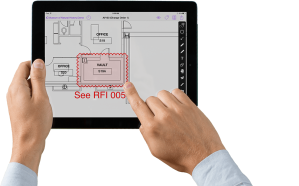Tags
4Projects, apps, augmented reality, Basestone, BIM models, collaboration platforms, Conject, construction projects, distributing drawings, engineering, enterprise software, Extranet Evolution, Issue management, mobile, mobile IT, Paul Wilkinson, reviewing designs, RFIs, submittals, technology, tenders, Tier 1 construction, UK Construction, version control, web APIs
Collaboration platforms for construction date back to the start of this century when pioneers such as 4Projects and BIW got going in the UK following the Latham and Egan reports with their focus on replacing an adversarial culture with a collaborative one. In time there were a number of new entrants such as Aconex from Australia and ASite. Both of the pioneer products now form part of larger firms, in the case of 4Projects through its acquisition by ViewPoint Software and BIW now forms part of the German company Conject.
The growth and diversity of the sector to its current state of maturity in the UK has been well tracked by Paul Wilkinson’s blog Extranet Evolution which is probably the most authoritative source of information and analysis of the sector online. This post deals with future trends in collaboration platforms in relation to mobile IT.

Collaboration platforms provide capabilities for allowing teams in the same or different locations to access “one version of the truth”.
They normally involve desk top or laptop based work on reviewing designs, distributing drawings, handling submittals, submitting tenders or raising issues.
Over the past few years a number of them have also added mobile clients but these seem not to have been promoted to any great extent. At the same time there has been the rise of stand-alone mobile applications for quality issues and snagging, some of which like Latista (USA) or Priority1 (UK) retained an enterprise software and enterprise sales model while others such as PlanGrid or Basestone were true “ enterprise apps” with a fully digital sales model and ease of use and acquisition. Now in addition to the above, we have the advent of mobile BIM with some collaboration vendors such as Aconex introducing the ability to address issues in BIM models on the mobile client while Vela Systems of the US was acquired by Autodesk partly for its capabilities in mobile BIM. It all looks like a very confusing picture. So what might happen in the future?
Mobile BIM of course, does not just comprise BIM enabled mobile clients of the collaboration platforms but also mobile applications of the BIM vendors themselves. Autodesk has through the acquisition of Vela, acquired what is in effect a mobile front end for Navisworks. Bentley also has a mobile client although it is not yet as advanced as the Autodesk one. The development of BIM capabilities in the collaboration vendors with their BIM model servers now means that these capabilities such as raising issues, attaching images, assigning work and model viewing and merging can also be done on mobile devices. The first stage of functionality here is viewing the model on the device and raising issues or closing out issues or commissioning plant from the mobile client. But one can envisage that the mobile features of BIM will extend out into other areas such as for instance imaging the scheduling (4D BIM), use of Augmented Reality along with BIM and also handling of cost information. Ease of use and easy navigation are going to be key considerations in driving the acceptability of such technology.
 It is not clear at this time how BIM in its mobile form is going to be used down the value chain on projects. Certainly there has, and continue to be quite a range of barriers to the adoption of mobile IT in UK construction and one of them has been the cost of tablets if such software was to be deployed enterprise wide.
It is not clear at this time how BIM in its mobile form is going to be used down the value chain on projects. Certainly there has, and continue to be quite a range of barriers to the adoption of mobile IT in UK construction and one of them has been the cost of tablets if such software was to be deployed enterprise wide.
With the advent of larger format smartphones in both Android and iOS, it is possible that the Bring Your Own Device (BYOD) trend could present one solution to this. However construction is very conservative and BYOD is much less acceptable here than in other industries. Any such BYOD deployments would need to be accompanied by use of some of the excellent Mobile Device Management applications to ensure security.
One other uncertainty about future trends here is the role of stand-alone mobile applications as against the mobile clients of the collaboration platforms. The advantage of mobile clients (which of course will also have to work offline as well) is that access to the central database of drawings and information is available and not just data input from in-field. To be really successful, stand-alone mobile applications are going to need to have interoperability with the collaboration platform or BIM model wherever it is held and/or drawings repository. This issue of lack of interoperability has traditionally been one of the biggest headaches in the construction software ecosystem. But with the advent of the cloud and in the era of web APIs this is no longer the challenge it once was.
To date most of the adoption of advanced construction technology including mobile IT has occurred by the big Tier 1 firms. But in recent years we are seeing a new generation of start-ups introduce new lightweight digital apps which are easily affordable by SME companies. There is great unmet need in that sector and one can expect to see this sort of technology being used increasingly down the value chain and not just by Tier 1 firms. In relation to BIM this emphasises the need for the software to provide a great user experience and be easy to us. Small firms are not going to be able to afford expensive mobile BIM training if that is what is needed.
In areas outside construction there has been a rapid growth of generic “enterprise apps” in the collaboration space such as for instance Yammer. We have also seen the rise of hugely successful messaging apps such as What’s App. These trends and the communications technology which underlie them are likely to also have an impact on construction and engineering. Not simply through the use of the above apps in those industries, but rather by the development of new construction specific apps or new functionality which allows instant messaging.
Apps such as What’s App are built using new technologies which allow for rapid, simultaneous transfer of data in both directions thus greatly speeding up and enhancing the communications experience. This is interesting because it raises the issue of whether and to what extent construction can benefit from synchronous working. Some design processes are synchronous i.e. they take place at the same time and in the same space whether that be a physical co-location for a number of people or a virtual one. But some design takes place also in stages after various professionals have considered various inputs.
 In operations there is a lot of asynchronous work. For instance a RFI is raised, sent and then one waits for a reply and acts on the reply. With instant messaging type collaboration one could get immediate access via video to someone, get an answer with associated media and then proceed. A group could informally view an image or video at the same time on mobile devices and each mark it up in real time.
In operations there is a lot of asynchronous work. For instance a RFI is raised, sent and then one waits for a reply and acts on the reply. With instant messaging type collaboration one could get immediate access via video to someone, get an answer with associated media and then proceed. A group could informally view an image or video at the same time on mobile devices and each mark it up in real time.
Team collaboration in real time from different locations would enhance co-operation between the contractor and sub-contractors. The meaning of “collaboration platform” could in time come to mean not just the cloud based document management and review system which is mainly desktop based but something wider which embraces mobile and real time as well and captures every communication. One US app company which is getting into this space is the construction app FieldLens while another more generic solution is the US start up Lua Technologies which sells to a number of industries.
So the future of mobile technology in collaboration platforms will likely see a mix of different systems being used, some office based and some mobile, all interoperable and all based around the common data environment.
In summary this is a very promising time for mobile IT in construction. The pace of technological change is relentless and this will in time make projects more efficient, teams more harmonious and sites safer to work in.
Peter Daly was formerly the co-founder of mobile app company SmartBuilder Software (subsequently re-branded as Plan2Finish).
![]() See Peter’s profile on LinkedIn
See Peter’s profile on LinkedIn
